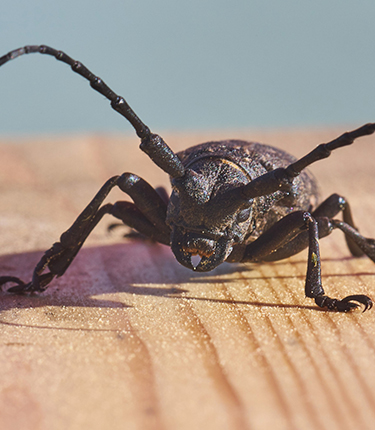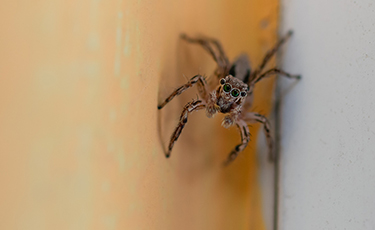We Get Rid Of What Disturbs Your Peace!
Below are some, not all of the common insects and spiders we deal with here along the front range. Many of these are not only difficult, but dangerous to try and remove yourself. We highly suggest you contact us if you encounter any of the following:
Ants:
Ants are highly gregarious insects that belong to the family Formicidae. With over 12,000 species, they inhabit almost every part of the world. Ants are drawn to food sources and can quickly infest homes or businesses. We will always identify the ant species, such as carpenter ants or fire ants, and locate the nest. The colony can then be eradicated using baits or pesticides. To prevent future ant infestations, it is crucial to maintain a hygienic environment, remove food debris, seal all entrances and crevices, and eliminate any stagnant water sources. The scientific name for ants is Formicidae.


Cockroaches:
Cockroaches are nocturnal insects that belong to the order Blattodea. There are over 4,500 species of cockroaches, and they can transmit diseases and cause allergies. It is important for us to identify the cockroach species, such as German or American cockroaches, and locate the nest. The infestation can then be eliminated using baits, pesticides, or insect growth regulators. To prevent future cockroach infestations, it is important to maintain cleanliness, eliminate food debris, seal all entrances and crevices, and eliminate any stagnant water sources. The scientific name for cockroaches is Blattodea.
Bed bugs:
Bed bugs are parasitic insects that belong to the family Cimicidae. They feed on human blood and are commonly found in bedding, furniture, and clothing. Bed bugs can cause discomfort and psychological distress. We always identify the infestation site and conduct a comprehensive inspection of the area. Heat treatments, pesticides, and vacuuming can be used to eliminate the bed bugs. To prevent future bed bug infestations, it is essential to inspect used furniture and clothing, wash bedding and clothing regularly, and seal all crevices or entrances in the home. The scientific name for bed bugs is Cimicidae.


Bees:
Bees are crucial pollinators that belong to the superfamily Apoidea. With over 20,000 species, they can pose a danger to humans if their hive is located in or near a home. An exterminator would identify the bee species, such as honey bees or bumblebees, and locate the hive. Various techniques, such as removing the hive or using pesticides, can then be employed to eradicate the bees. To prevent future bee infestations, it is important to seal all entrances and crevices in the home and keep all outdoor garbage cans covered. The scientific name for bees is Apoidea.
Beetles:
Beetles are a diverse group of insects belonging to the order Coleoptera. There are more than 400,000 species of beetles, and they can be found in almost every part of the world. Some types of beetles can cause damage to crops, while others can be a nuisance in the home.
To get rid of a beetle infestation, we start by identifying the type of beetle species and the location of the infestation and often use a combination of methods to eliminate the beatles, such as insecticides, traps, or exclusion methods. For example, if the beetles are entering the home through cracks or entry points, we might recommend sealing these areas to prevent future infestations.
To prevent future beetle infestations, it is important to keep the home clean and free of food debris, store food in airtight containers, and seal any cracks or entry points in your home. Additionally, it is important to remove any sources of moisture, such as leaky pipes or standing water, as some types of beetles are attracted to damp areas.


Wasps:
Wasps are a type of flying insect belonging to the Hymenoptera order. They can be divided into two main types: social wasps and solitary wasps. Social wasps are known for building nests, which can be found in trees, eaves, and attics. Solitary wasps, on the other hand, live alone and do not form nests. Wasps can be a nuisance, and in some cases, they can be dangerous, as they can sting multiple times.
To get rid of a wasp infestation, we start by identifying the location of the nest and use a variety of methods to eliminate the nest, depending on its size and location. For example, if the nest is small and easily accessible, we may use a spray or dust to kill the wasps. If the nest is large or hard to reach, we might use a specialized vacuum or other equipment to remove the nest. To prevent future wasp infestations, it is important to seal any cracks or entry points in your home, and to remove any sources of food or water that might attract wasps.
Spiders:
Spiders are carnivorous arachnids that belong to the order Araneae. With over 45,000 species, they can help control other insects but can also cause fear in some people. We will identify the spider species, such as black widows or brown recluse spiders, and locate the nest. Vacuuming, pesticides, and sticky traps can be used to eliminate the spiders. To prevent future spider infestations, it is important to seal all entrances and crevices in the home and minimize clutter. The scientific name for spiders is Araneae.


Termites:
Termites are wood-destroying insects that can inflict considerable harm to houses and other wooden edifices. In order to eliminate termites, we begin by identifying the termite species and the site of the colony. A combination of baiting systems, liquid termiticides, and foam agents would then be utilized to exterminate the infestation. To avert future termite infestations, it is crucial to remove all wood debris from your property, keep all wooden structures dry, and seal any crevices or entrance points in your house.
Silverfish:
Silverfish are small, wingless insects that belong to the order Zygentoma. They are often found in homes, as they are attracted to damp areas and paper products. Silverfish can be a nuisance, as they can cause damage to books, clothing, and other items.
To get rid of a silverfish infestation, we always find the source of the infestation. They would then use a combination of insecticides, baits, and traps to eliminate the silverfish. In some cases, the exterminator might recommend removing any sources of moisture in the home, such as leaky pipes or standing water, as silverfish are attracted to damp areas. To prevent future silverfish infestations, it is important to store items in airtight containers, keep the home dry, and seal any cracks or entry points in your home.

